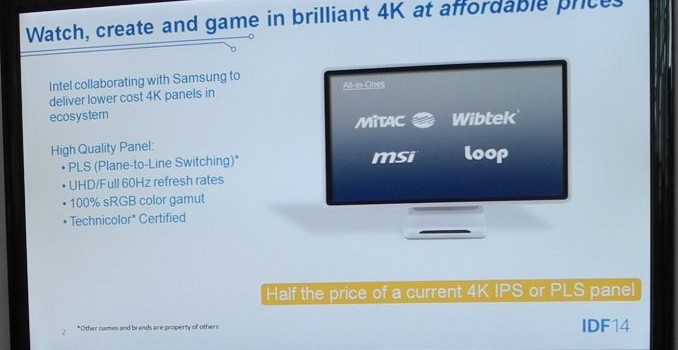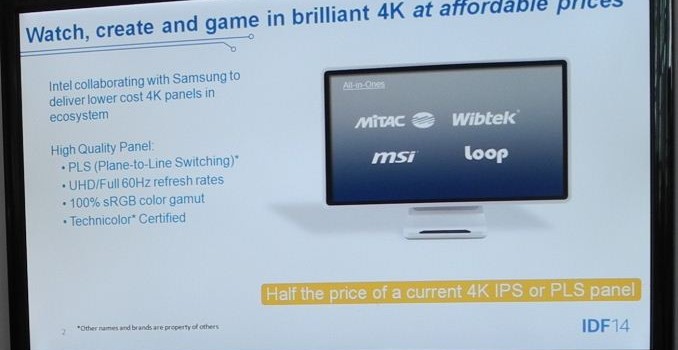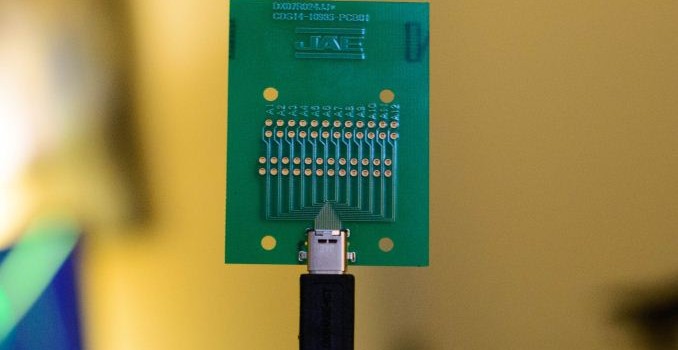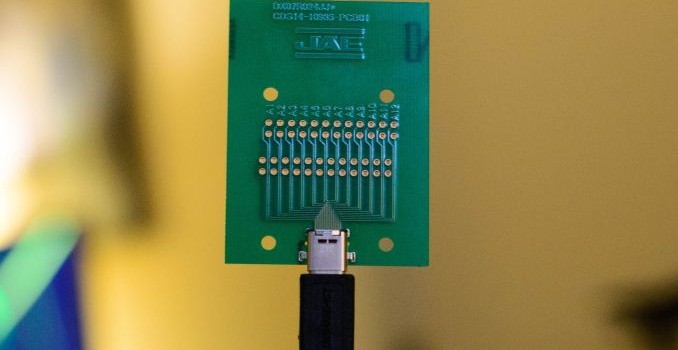IDF 2014: Affordable 4K Panels and AIOs
At Computex earlier this year, Intel had talked about 4K panels becoming more affordable (monitors around $400). The 4K All-in-Ones using those panels were on display at IDF. We grabbed a few photographs and they are linked in the gallery below.
The PLS panels have great viewing angles. Importantly, they also support full 60 Hz refresh rates even at the maximum resolution (UHD). Consumers worried about the usage of TN panels and lower refresh rates to hit the advertised price point have nothing to fear. Since Intel is pushing this effort, it makes sense that they first concentrate on the All-in-One (AIO) market which helps them sell their CPUs. The AIO models should go on sale soon, and Intel expects that Samsung will push these 23.6″ panels into monitors very soon. The AIO models that were on display were high-end configurations with i7 processors and expected to come in around $1000, but cheaper models with less powerful CPUs are also on the way. [ Update: The systems on display are highly customizable Thin Mini-ITX-based AIOs. The 4K AIOs are anticipated to begin at prices of $999, but the systems on display (as configured with a 4th Gen Intel Core i7-4770S and Intel SSDs) were closer to the $1500 mark. In particular, the system in the gallery above is a Mitac M980, which will be available as a whitebox system to distributors and other OEMs]















